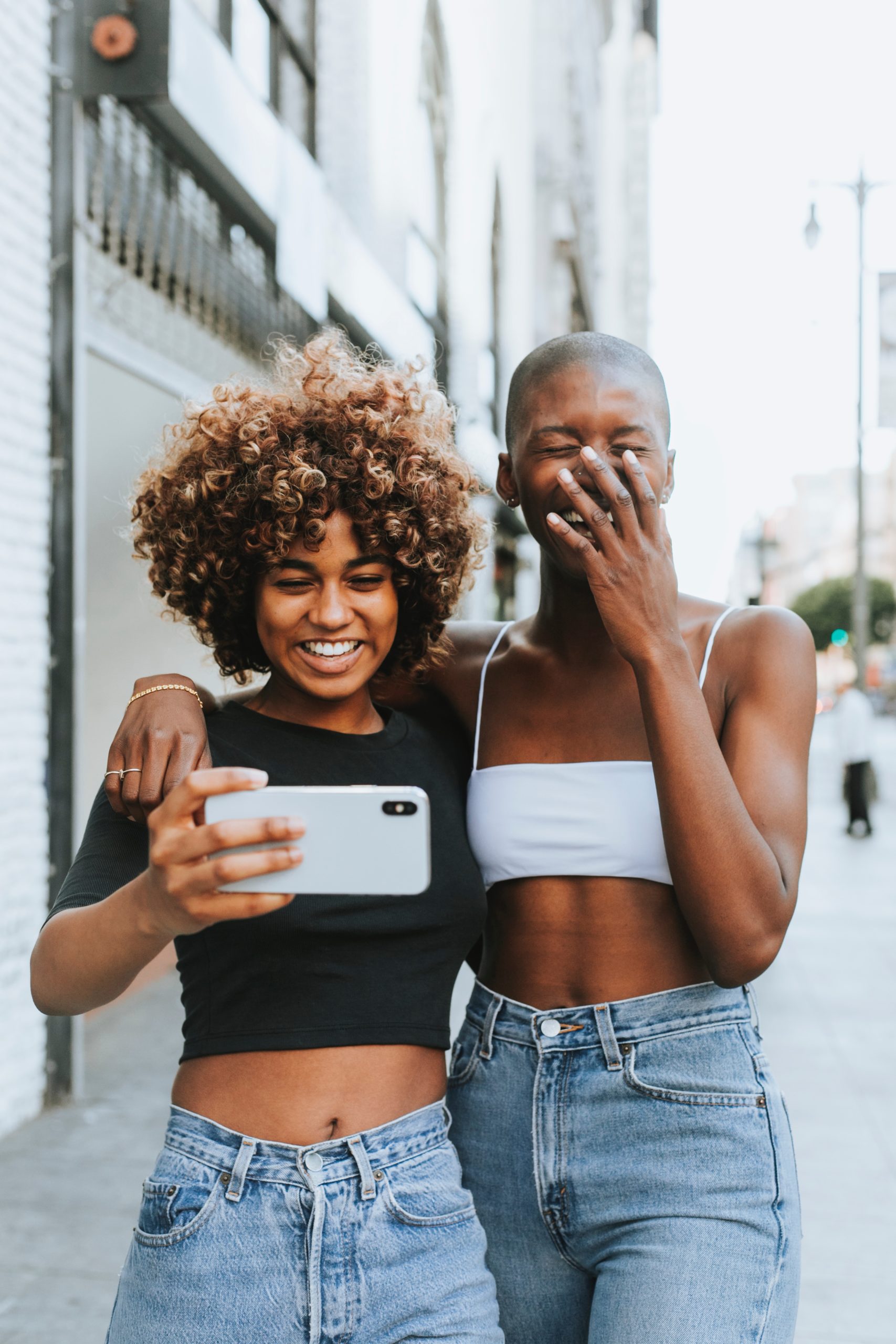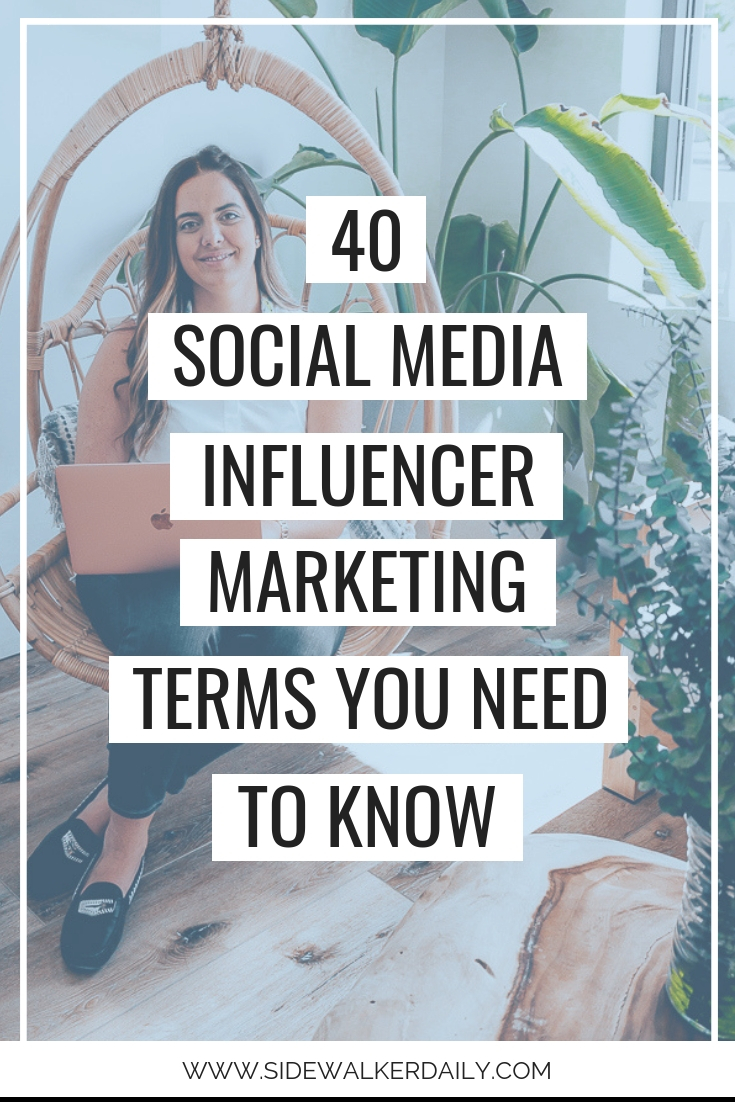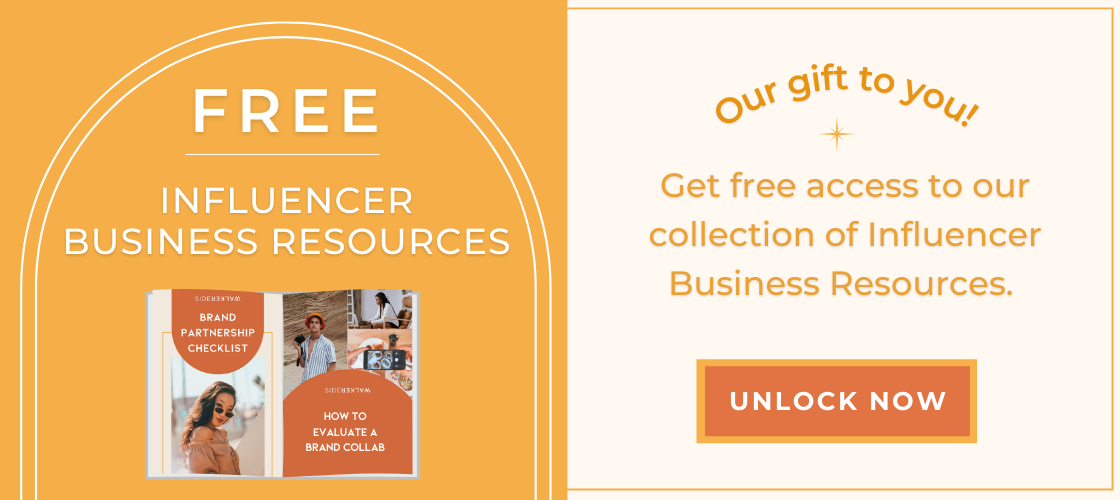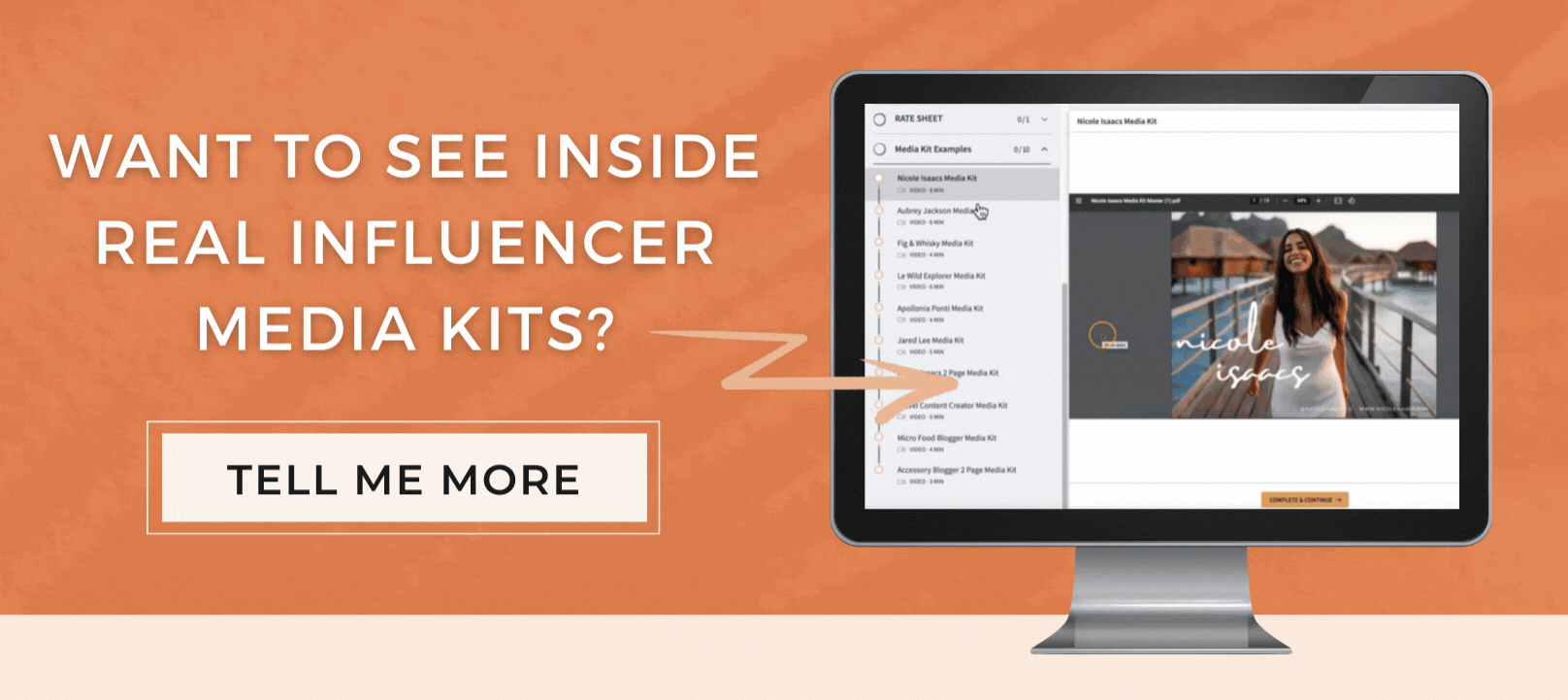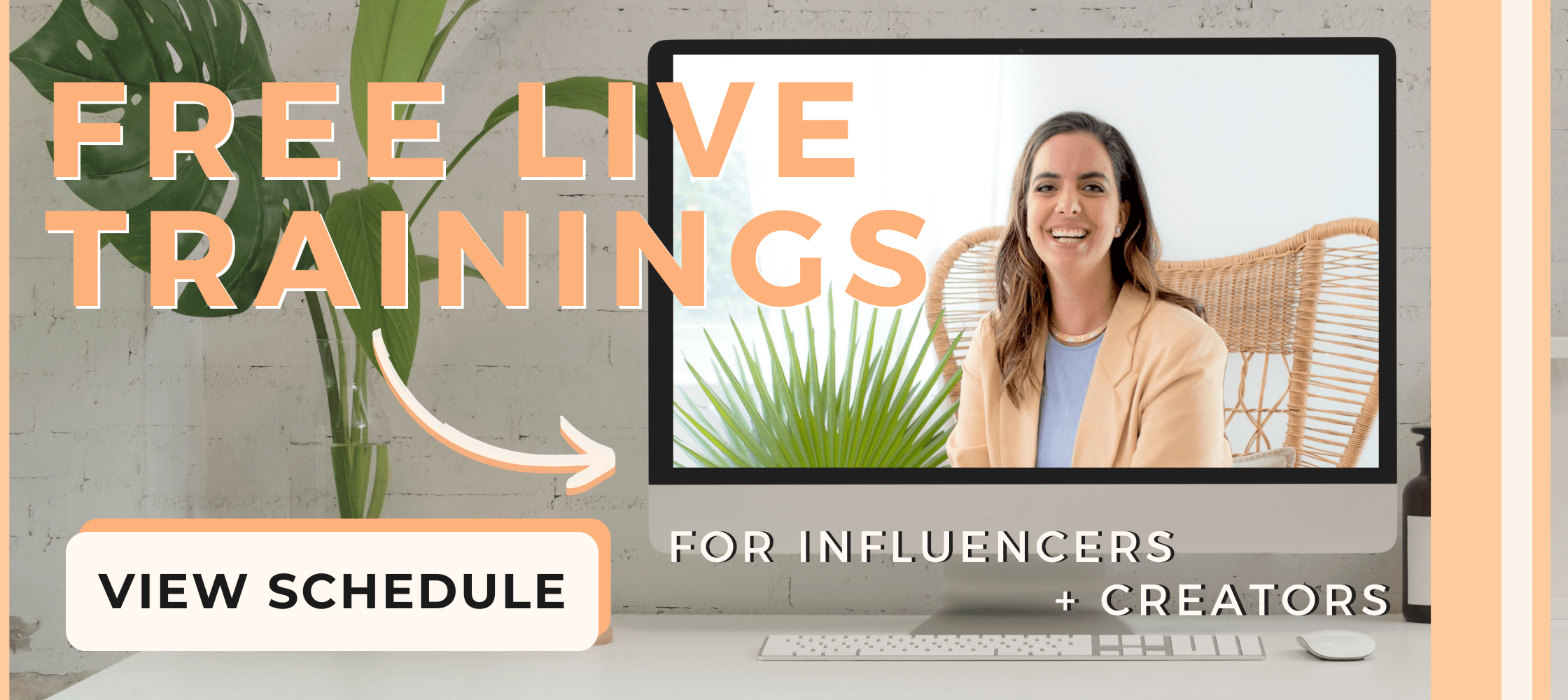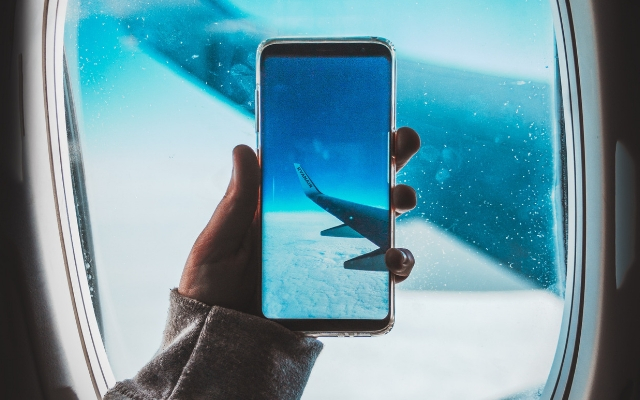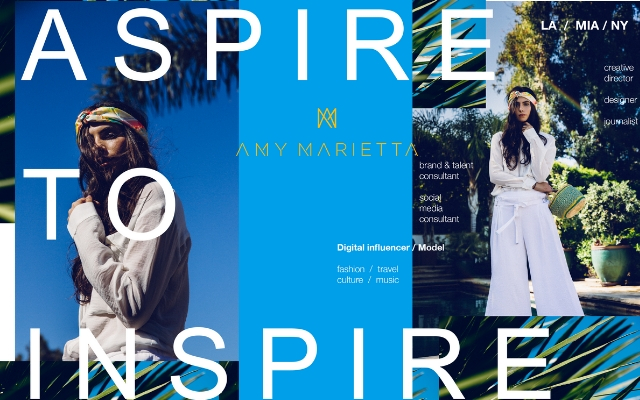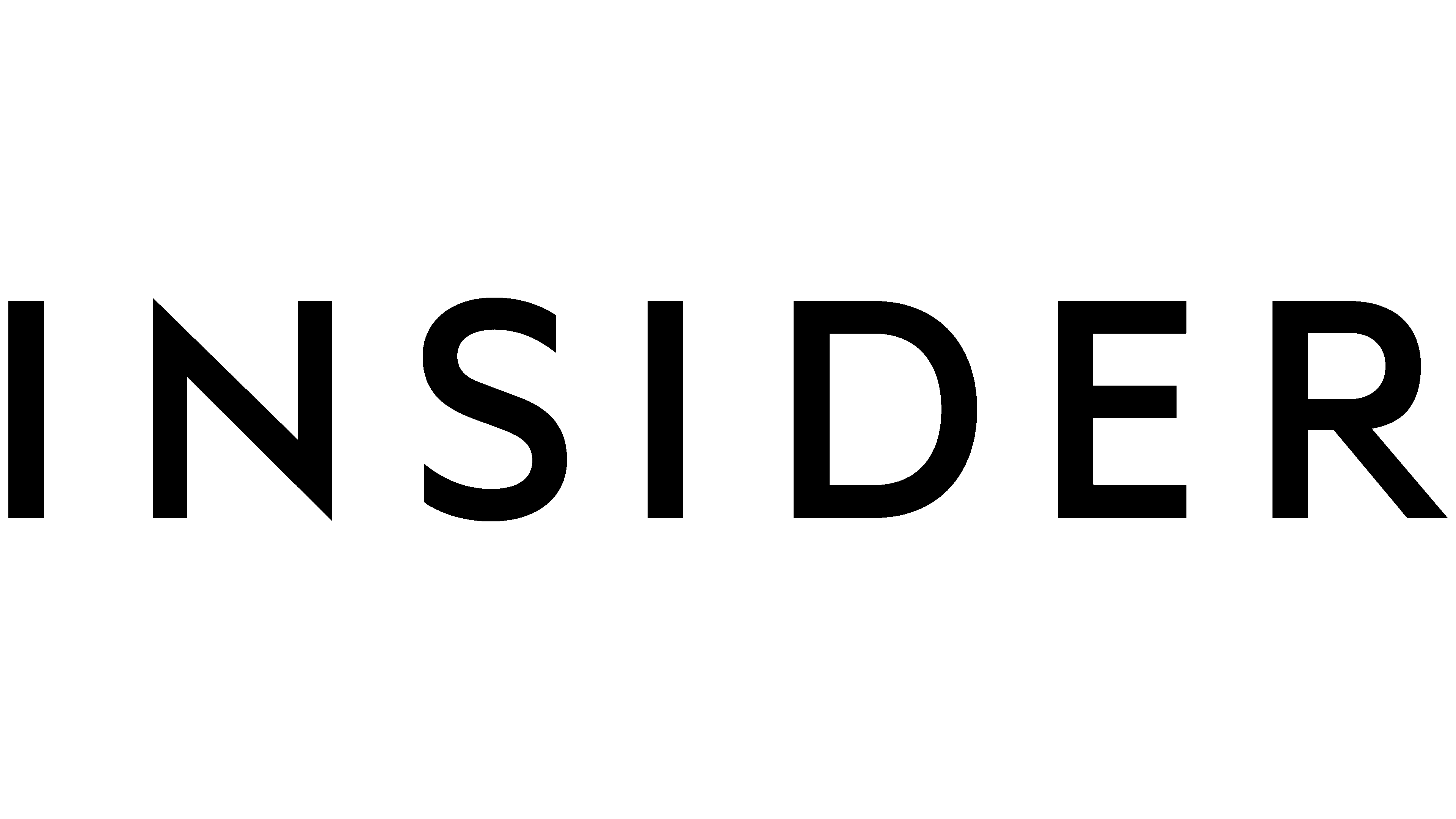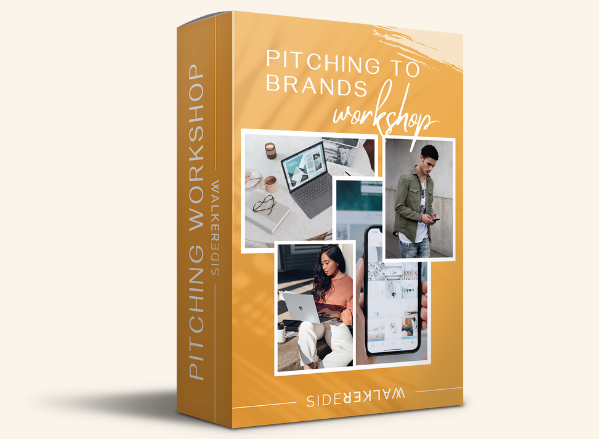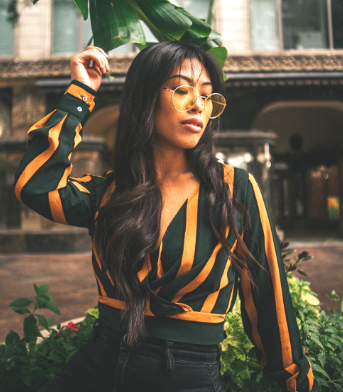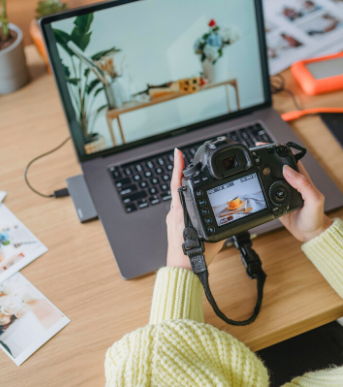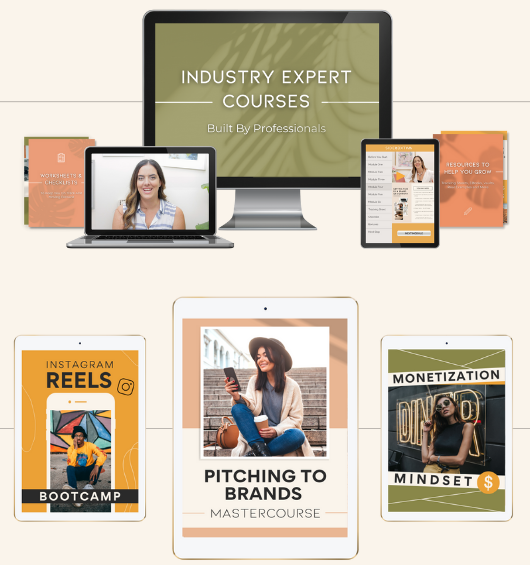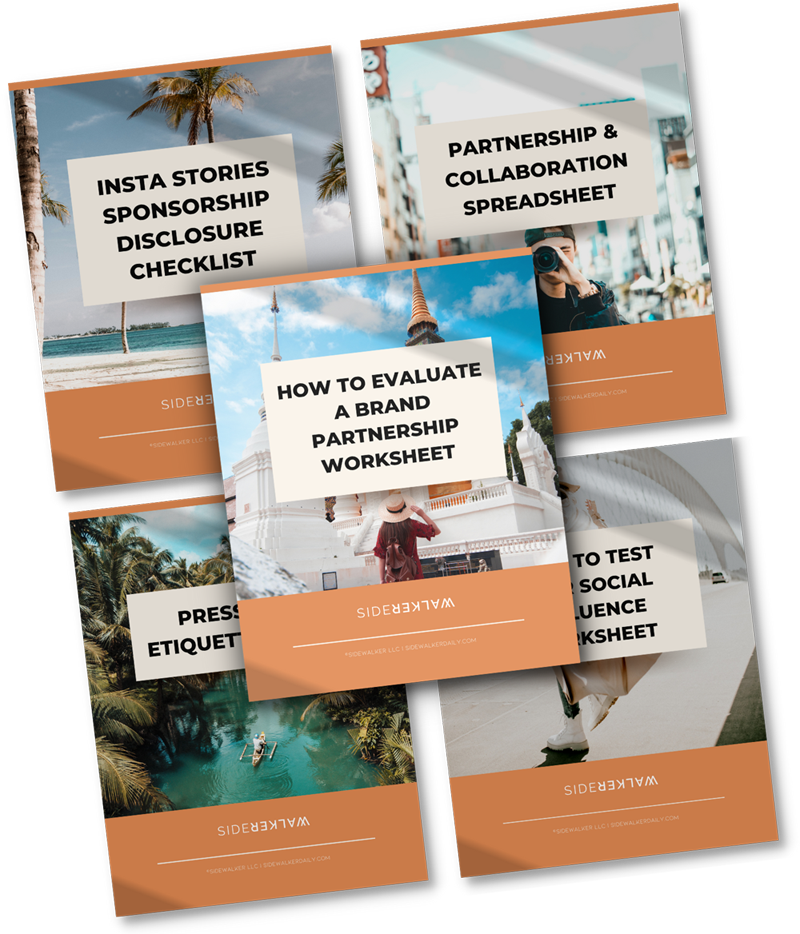40 SOCIAL MEDIA INFLUENCER MARKETING TERMS YOU NEED TO KNOW
If you’re in the influencer realm, it can sometimes feel like you’re in the wild west – everything is up for interpretation and sometimes making sense of it all can be a real challenge. The social media influencer marketing space has grown so much in the past few years that there are now some defined influencer marketing terms that everyone should know to be able to speak the language of influence.
Now that major (and even small) brands are incorporating influencer initiatives into their yearly marketing budgets, things are starting to get a little more serious and the expectations for pitches and working with influencers are higher than ever before. No matter what industry you are in, you have to be well-versed in that industry’s terms to be able to understand what everyone is talking about…or you may not be taken as serious as you would like.
At Sidewalker Daily, we help influencers and creators pitch to brands. We also consult with brands on their influencer campagns, so we see brand deals from both sides.
Professionalism in this industry is more than just branding, media kits, case studies, and amazing pitching emails…it’s being able to speak the same language as everyone else and show them that this isn’t just a hobby…it’s your job.
To help you out, we’ve put together this glossary of important influencer marketing terms that you need to know before negotiating your next partnership deal!
Influencer Marketing Glossary of Terms:
AFFILIATE MARKETING:
We’ve mentioned affiliate marketing before because it’s one of the most popular types of influencer marketing that brands use, and can be a great way for you to earn money on social media…even while you sleep! If you’ve ever read a blog post and seen links to products or services that were being recommended by the author, those were probably affiliate links. As an affiliate, you promote a brand, product, or service, and then receive a commission based on how many sales you send their way. The transaction is usually tracked using a link that is specific to you, and you’ll get a commission when someone clicks the link and purchases the product or service.
AMBASSADOR:
An ambassador is traditionally a representative or promoter of a specific activity, service, brand or product, and this definition holds true in the influencer market too. A brand will usually compensate an influencer for being an ambassador, promoting the brand, representing them in a positive light, and increasing brand awareness and sales. When you’re considering an ambassador position, make sure to define all expectations and compensation. Your role as an ambassador can be more ambiguous than just doing a one-time brand partnership so it’s important to keep the logistics (and everything they will require from you) top of mind when negotiating so you can manage expectations.
BOILERPLATE:
In the PR world, a boilerplate is a blurb at the end of a press release that explains the background of the company and how they’re related to the press release. A boilerplate is essentially an ‘About Us’ for the company, and it’s an important opportunity for PR professionals to define the key messages of the company they’re writing about. If you’re an influencer, brands may ask you for a boilerplate – this just means send them a quick about, written in the 3rd person.
CALL-TO-ACTION (CTA):
Anyone vying for your attention, trying to tell you what to do next, is using a Call To Action or “CTA.” CTA’s are used in marketing to invoke an immediate and actionable response from the audience. CTA’s are used everywhere, from Instagram captions (“click the link in my bio for more!”) to emails (“sign up today”). Depending on the type of partnership deals, you may be asked to use a CTA to drive your audience traffic to a certain website or product on behalf of the brand.
CAMPAIGN:
Campaigns are organized marketing efforts working toward a single goal. For example, a brand may bring you on as a partner for a campaign highlighting their product launch, with the goal being product awareness and sales. There may be multiple influencers working together on one campaign or your role may be to just push out the messaging on your social media influencer platform as part of a larger campaign.
CASE STUDY:
A case study is the research and analysis of an event, project or campaign, in order to draw conclusions from the outcome. A case study can be made really about anything but recently, marketing agencies and social media influencer marketing professionals have been creating case studies on influencer marketing initiatives to quantify their effectiveness and Return On Investment (ROI). It may be a good idea to do a case study on your own influence, to understand its reach, effectiveness and value, especially since brands are asking for case studies more and more when evaluating influencers for brand partnerships.
CLICK THROUGH RATE (CTR):
A click through rate or CTR is the number of times people click on the link or type of button that will lead them somewhere else on social media or the internet. For example, if you are promoting a product on Instagram and prompt your followers to “click the link in bio,” then the average number of times people take that action and click on the link, would be your “CTR.” Yes, even “Swipe Ups” on Instagram can count as a measure for a click through rate.
CLIP/CLIPPING:
A press clip is usually an image copy of news coverage that PR professionals collect to prove their success in getting a story out. In the influencer world, PR or brand representatives may ask you for “clips” which means screenshots or copies of the promotion you did for them on social media or your blog. You can also use clips in your social media reports following any partnerships, if they’re applicable to your campaign.
CONTENT CALENDAR:
Creating a content calendar can be a powerful tool for building your brand voice and keeping tabs on your posts across all channels. A content calendar is a document, excel sheet, phone app, or website that serves as one place where you can plan your social media posts and blog topics ahead of time. If you have to juggle traveling and partnerships, a content calendar is a great way to make sure everything gets posted on time and looks cohesive. Remember, everything you do on social media and your blog reflects your brand so it’s better to be organized to make sure everything is perfect…and also to minimize stress. :)
CONVERSION:
A conversion is the point when a site visitor or follower does that thing you’re waiting for them to do…whether it’s adding themselves to your email list, becoming a paying customer, or clicking that affiliate link. “Conversion” is a common term that brand partners may use when talking about the success of a partnership.
COST PER ACQUISITION (CPA):
Cost per acquisition, or cost per action, is simply the cost of a conversion. So basically if a company is paying you $1,000 to post and promote their brand on Instagram, and their goal is to make sales, then the “CPA” would mean how much did it cost in marketing dollars to get each sale. For example, if they got 100 sales from that one Instagram post, then the CPA would be $10. ($1000/100 = $10). When it comes to CPA, the lower the better (because it means they spent less money getting the acquisition), and figuring out that number can help brands quantify if they’re spending their marketing budget the right way, or if there are less expensive (and more effective) ways to get the same results. When you have these types of partnerships that focus on acquisitions, then the brands will probably calculate the CPA for your campaigns based on how much they’re paying you and how much business you’re bringing in on your side – CPA plays a big role in ROI.
COST PER CLICK (CPC):
More specific than a Cost Per Acquisition, a Cost Per Click is the amount of money that it costs a brand to get someone to click on a link or ad. This is also a pricing model for online advertisers, where the advertiser pays the site each time their ad is clicked on. So for example, if a company puts $1,000 into paying for advertising on Facebook to promote their new website, and they had 5,000 clicks on the advertisement, then the CPC would be $0.20. ($1000/5,000 = $0.20).
COST PER LEAD (CPL):
CPL is the cost of each lead or new potential client. It is a pricing model, where an advertiser pays for the leads that are generated by the advertisement.
COST PER MILLE (CPM):
CPM is also called Cost Per Thousand (CPT), and is the cost that an advertiser pays per thousand of impressions.
COST PER ENGAGEMENT (CPE):
CPE is the cost of an engagement with an ad. This engagement-based pricing means that advertisers pay for each active engagement with their advertisement.
DESTINATION MARKETING ORGANIZATION (DMO):
A destination marketing organization (DMO) is responsible for the promotion and marketing of a destination for leisure and business travel. It’s also frequently referred to as a “Convention and Visitors Bureaus” or “CVB” or a tourism board. As a travel influencer you may find yourself working with a DMO and visiting a destination for a press trip. Here at Sidewalker Daily, we work with travel brands and DMOs to facilitate influencer press trips so if you’re a travel influencer, sign up to be in our Press Trip Program here.
Social Media & Influencer Marketing Terms Cont.
DELIVERABLES:
“Deliverables” are the products or services you’re providing to your client or brand partner in exchange for monetary compensation, travel or product trade.
To negotiate partnerships, you need to understand the types of deliverables you can offer a brand to help them achieve their social media influencer marketing goals and objectives. Once the deliverables are agreed upon, then you know what you have to deliver to the brand or client for the partnership, campaign or project to be complete. For example, if a brand is paying you for 2 permanent posts on Instagram, 3 Instagram Stories and 1 blog article, those would be your “deliverables” for the partnership.
EARNED MEDIA:
There are 3 types of media – paid, owned and earned.
Paid media is paid advertising (think Facebook ads), owned media encompasses all sites owned by the person or company (their website, Instagram, Facebook page), and earned media is any media about the person/company that isn’t paid or owned. Earned media is the the main focus for PR professionals when they’re getting coverage on a story or event. Someone else talking about you? That’s earned media.
EDITORIAL CALENDAR:
An editorial calendar is used to keep content marketing organized and scheduled. Brands and companies use editorial calendars to plan when they’re going to brainstorm, write, edit and publish any content they’re pushing out to their various channels such as their email list, website articles, social media and even print. It’s a way for tons of different departments and teams all within a company to stay organized with all of the content and campaigns they are planning to rollout for the foreseeable future and to make sure everyone on the team meets their deadlines.
ENGAGEMENT RATE:
Engagement rate is the rate of engagement (likes, comments, Instagram Story views, swipe ups) that you receive on a piece of content. Engagement rate can even be calculated for an entire social media platform (or multiple)! Your engagement rate is largely considered the most important number that you can share with brand partners when pitching because it is seen as a way to measure your connection (and influence) with your audience. It’s essentially one of the factors brands will consider when deciding whether to work with you or not, because it’s linked to how they measure ROI (return on investment) and the value you’ll bring to the partnership.
EOD:
“EOD” stands for “End of Day” which really means the end of the business day, not the actual day. The end of a business day is traditionally 5:00 pm but pay attention to where the client or brand is located in the world because your EOD may be different than theirs. For example, if the brand or client is in New York City and you’re in Los Angeles, then you’ve got to factor in the time difference when you see the term EOD.
FACT SHEET:
A fact sheet is a one-page tool used by marketing and PR professionals to summarize and present essential information and statistics about a product, service or business. For influencers, a fact sheet is kind of like your media kit, where it has all the essential information about your blog or brand that you can provide to potential partners and clients!
FAM TRIP:
FAM trip stands for familiarization trip which is another term for press trip – they are frequently used interchangeably. Traditionally, a FAM trip would be complementary to travel agents, but now these trips can include anyone who is in the position to promote the product, property, or destination…like an influencer! A FAM trip can be organized by airlines, hotel companies, tourism boards or any other DMOs – really anyone who would benefit from your recommendation (or endorsement) of their property or destination to your audience.
FLIGHT AGREEMENT:
A flight agreement is an agreement used when you are going on a press trip and the destination or hotel is paying for your flight. You will state the airport you are flying out of and the one you would like to return to, along with dates and other important travel information. Flight agreements also typically allow influencers and bloggers to state their desired trip schedule. Once you sign this agreement, it basically ensures that if there are any flight cancellations or changes, it’s on you to cover any fees or costs associated with the change. Companies and tourism boards will often let you review the flight information and approve/sign before they purchase the flight.
FTC:
The FTC is the Federal Trade Commission, the arm of the US government in charge of making regulations for influencers. You heard that right, influencer marketing is no longer the lawless wild west! The FTC is now making sure that the consumer (your followers) is safe when it comes to seeing advertising and marketing on social media. Basically you’re required to let your audience, followers, fans or community know when you’re being paid to post or even when you just have a material connection to the brand or service you’re promoting. If you’re an influencer or blogger then you definitely should be up to speed on the FTC’s disclosure requirements since they have recently been cracking down on influencer marketing posts and campaigns.
KEY PERFORMANCE INDICATOR (KPI):
A Key Performance Indicator or “KPI” is a business term used by all sectors (and now even the influencer industry) to refer to the measurable indicators you can look at to judge whether the actions or initiatives are helping you reach your overall goals and objectives. So in the influencer world, a KPI could be the number of new email sign ups you got for a brand’s email list, or the amount of Instagram followers you got to follow the brand’s account. One of the most important things you can do when working with a brand is to understand their KPIs before the partnership begins so you can plan how to best leverage your social media platforms and influence to help them achieve their goals and make the partnership a success.
LETTER OF AGREEMENT:
The letter of agreement between you and your brand partner is a very important step in finalizing your partnership and can sometimes substitute as a contract for the partnership, project or campaign. And you should definitely have a contract or agreement in place before you start doing any work for a brand or client. Not only does it protect you, but it also ensures that everyone is clear on expectations so there are no (or at least limited) misunderstandings along the way. Your goal is to have a successful partnership so you can either get hired for more work or get a great recommendation or testimonial to put in your media kit. And don’t forget that everything is negotiable, so you’ll want to think about what works best for you when it comes to things like deliverables, due dates and the ownership of your content!
MEDIA KIT:
A media kit is a document that contains all the important information about your blog or brand. It’s basically your pitching deck, your brand presentation, and even your creative resume. If you’re an influencer or blogger then you are a content creator which means everything you do, including your media kit, should be on brand and professional. Your media kit will include everything about you, your social media channels, your influence, statistics, demographics, partnership offerings, and contact information. Check out our article on how to create a media kit here!
MEMORANDUM OF UNDERSTANDING (MOU):
A Memorandum of Understanding or “MOU” is a document that is kind of like a contract. It outlines the terms and details of the agreement between you and your partner but is just a little less formal than an official contract or agreement.
PHOTO WAIVER:
A photo waiver, or a photo release form, is a document you must sign that has all the details about ownership of content, usability of photos or video and any releases required for your partner to do X,Y,Z with your images. Since the influencer and blogging world relies heavily on imagery and video content, there needs to be clear expectations about what the brand partner owns and how they can use your photos for promotional purposes. For example, can they use your photos only on social media, any online marketing platforms, print or even billboards? A photo waiver is just the legal document saying that you gave the brand permission for them to do X,Y,Z with your images and video footage.
POWER MIDDLE:
A “power middle” influencer refers to the influencers who have graduated from being a micro-influencer but are not yet considered a social media celebrity. Generally speaking, power middle influencers tend to have better engagement rates than mega influencers and often get more partnerships because of it!
PRESS KIT:
A “press kit” is often used interchangeably with “media kit” in the influencer industry. See above definition of “media kit” for the details.
Social Media Influencer Marketing Glossary Continued…
PRESS RELEASE:
A Press Release is an official statement released to members of the press regarding any sort of announcement coming from a business. When you’re working with travel brands or destinations, it’s a good idea to do your research before commencing the project which includes looking over any recent press releases they put out.
For example, let’s just say you’re going on a press trip with the Bahamas Tourism Board – you may want to ask them to send over any recent press releases for you to review before the trip. Another way the term “press release” may come up when working with a brand is if they say that they will be issuing a press release about the campaign you are working with them on.
That means they will send off a statement to different types of relevant press outlets (think traditional magazines, online magazines or even social media outlets etc) to try to get people to write about their brand and the campaign as a whole…which means more exposure for you!
PRESS TRIP:
Press trips are promotional trips that are organized by DMOs and brands to promote their products, services or destinations. Depending on your contract, press trips are typically all expense paid trips that you can attend in exchange for promotion and content of that destination, hotel or brand!
Sometimes press trips are unpaid but typically when there are additional brand partners or a campaign element, you would be compensated for the trip.
RATE SHEET:
Think of a rate sheet in the influencer and blogger world as an advertisement rate sheet. If a company was charging advertising space on their website, tv channel or magazine they would have to tell the person looking to advertise how much it would cost for them to do so.
This is basically what you are doing for brands, just the outlets are your social media channels and blog and the viewers are your followers and fans. Not sure where to start with this one? Check out our recent article on creating a rate sheet here.
REACH:
Reach basically means how many people (we like to call them eyeballs) see, or can potentially see, your content. For example, if you’re an Instagram influencer then your “reach” can be the number of followers you have, Story views or even impressions on a post.
RETURN ON INFLUENCE:
Return on influence is a more qualitative approach to measuring whether you’re a good investment for a brand partner who will potentially pay you for your reach.
Return on influence is concerned more with your audience engagement, resonance, loyalty and audience advocacy than monetary factors. It’s basically your street cred…will your followers actually take action based on what you say aka do you have real influence?
RETURN ON INVESTMENT (ROI):
Return on Investment, or “ROI,” basically means what value did the partner or client get in return for how much they spent on the campaign, project or social media influencer marketing initiative.
An important part of calculating influencer marketing ROI is understanding the goals of the brand partner first, so you can understand what they are even trying to get out of the partnership! For example, if a brand spends $10,000 on an influencer campaign with the goal of increasing email signups on their website then you would need to track how many email signups you were able to generate for the brand. Yes, likes and comments are great too but it wasn’t the goal of the campaign.
Return on investment is easy to calculate – all you need is a KPI (goal), the amount the brand spent on making that goal happen and the results of the project or campaign. So in our example let’s just say you were able to generate 2,500 email signups for the brand – then you would need to calculate how much it cost the brand per email sign up which would be $10,000/2,500 = $4 per email sign up.
Every brand has different measures or expectations when it comes to calculating ROI so the better you can understand their metrics and goals, the better you can ensure the partnership is a success.
SEARCH ENGINE OPTIMIZATION (SEO):
When you tailor your online content to appear as high as possible within search engines (like Google), you are using search engine optimization or “SEO.” Generating traffic to websites and articles through SEO is considered “organic” because you didn’t have to pay for it!
We highly recommend reading up on best SEO practices if you have your own blog because it’s a sure way to get more people to see your content which can translate to other great things like more social media followers, affiliate sales and even the proof you need to land brand partnerships!
SENTIMENT:
Sentiment has become an increasingly important factor for brands in the age of social media. Sentiment is the attitude or emotional reaction that someone has toward something (in this case brands, products, services) and companies are now using sentiment analysis to understand how people feel about their brand and what is being said about them on social media. Social media influencer marketing is one tactic companies use to help improve sentiment within their audience as well as improve their brand perception online.
Social Media Influencers Better Take Note!
Don’t worry, we’re not handing out any pop quizzes… but we definitely recommend getting familiar with the definitions of these social media influencer terms ASAP. We hope this social influencer marketing glossary helped cleared up some of those vague terms that get thrown around in emails from brands, your influencer friends and even in our articles and free resources!
Staying on top of industry trends and constantly working to improve your pitching materials, brand, and connection with your followers and fans are key important factors to making it in the influencer world.
The Power Of Influencers
Brands understand the power of social media influencers and that influencer marketing on social media works. They are now taking this industry seriously which means allocating money from traditional marketing budgets and putting it into social media and influencer marketing instead.
At the end of the day, brands are a business and want to work with professionals so understanding and knowing the social media influencer marketing lingo is one of the best ways to get ahead in this industry and stand out from the crowd!
If you need more help navigating this world and landing paid brand partnerships, book a time to chat with one of our influencer industry experts. We can answer your questions and help you come up with a plan.
Did you find this article helpful? Leave a comment below and let us know!

